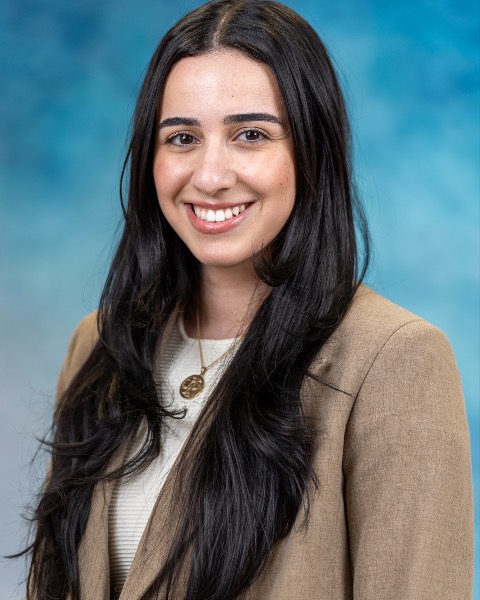Thorax Case & Anatomical Studies Posters
Poster: Thorax Case & Anatomical Studies Posters
39 - A Case Report: A Left Tortuous Common Carotid Artery in a Female Donor
Saturday, March 23, 2024
5:00pm - 7:00pm US EDT
Location: Sheraton Hall
Poster Board Number: 39
There are separate poster presentation times for odd and even posters.
Odd poster #s – first hour
Even poster #s – second hour
Co-authors:
There are separate poster presentation times for odd and even posters.
Odd poster #s – first hour
Even poster #s – second hour
Co-authors:
Rami Dali - Oakland University William Beaumont School of Medicine; Kaltri Hoxha - Oakland University William Beaumont School of Medicine; Pallavi Kenkare - Oakland University William Beaumont School of Medicine; Emily Tenniswood - Oakland University William Beaumont School of Medicine; Malli Barremkala - Oakland University William Beaumont School of Medicine

Sarah Ibrahim, MS
Medical Student
Oakland University, William Beaumont School of Medicine
Auburn Hills, Michigan, United States
Presenting Author(s)
Abstract Body : Introduction:
The right and left common carotid arteries, commonly linear structures found in the carotid sheath, bifurcate into the internal and external carotid arteries at the C4 vertebral level. These arteries serve as the main supply of blood to the head and neck. Prior studies predominantly concentrate on variations in the internal carotid artery (ICA), in this case report we shed light on highlighting variations in the common carotid artery (CCA).
Methods:
Routine cadaveric dissection was completed on 21 body donors at the Oakland University William Beaumont School of Medicine (OUWB). The age range of the donors was 53 years to 97 years, and the analysis aimed to shed light on variations in the common carotid artery.
Results:
C-shaped and tortuous left CCA observed in a 91-year-old female donor. No variation was noted neither on the right CCA nor on the ICA.
Conclusion:
While tortuous carotid arteries can be found in 1.9% of healthy subjects, this number may rise to up to 30% in patients with cerebrovascular symptoms. Our study adds to existing literature by highlighting the variations in the common carotid artery, particularly in the elderly age group.
Clinical Significance:
The carotid artery tortuosity is associated with connective tissue disorders, atherosclerosis, hypertension, and extracranial carotid artery aneurysms. A thromboembolic or hemodynamic mechanism is suspected in nearly all symptomatic cases. It may also be associated with local reversed blood flow and non-uniform blood pressure that is substantially higher than blood pressure values for a normal common carotid artery.
The right and left common carotid arteries, commonly linear structures found in the carotid sheath, bifurcate into the internal and external carotid arteries at the C4 vertebral level. These arteries serve as the main supply of blood to the head and neck. Prior studies predominantly concentrate on variations in the internal carotid artery (ICA), in this case report we shed light on highlighting variations in the common carotid artery (CCA).
Methods:
Routine cadaveric dissection was completed on 21 body donors at the Oakland University William Beaumont School of Medicine (OUWB). The age range of the donors was 53 years to 97 years, and the analysis aimed to shed light on variations in the common carotid artery.
Results:
C-shaped and tortuous left CCA observed in a 91-year-old female donor. No variation was noted neither on the right CCA nor on the ICA.
Conclusion:
While tortuous carotid arteries can be found in 1.9% of healthy subjects, this number may rise to up to 30% in patients with cerebrovascular symptoms. Our study adds to existing literature by highlighting the variations in the common carotid artery, particularly in the elderly age group.
Clinical Significance:
The carotid artery tortuosity is associated with connective tissue disorders, atherosclerosis, hypertension, and extracranial carotid artery aneurysms. A thromboembolic or hemodynamic mechanism is suspected in nearly all symptomatic cases. It may also be associated with local reversed blood flow and non-uniform blood pressure that is substantially higher than blood pressure values for a normal common carotid artery.

